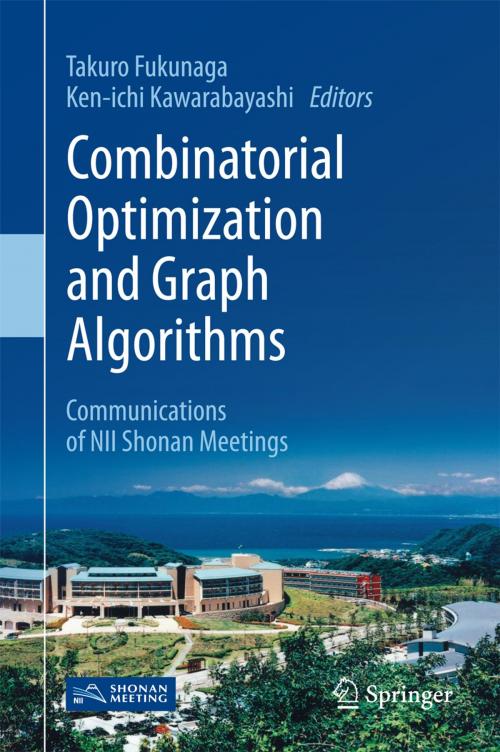Combinatorial Optimization and Graph Algorithms
Communications of NII Shonan Meetings
Nonfiction, Science & Nature, Mathematics, Discrete Mathematics, Computers, Database Management, Data Processing| Author: | ISBN: | 9789811061479 | |
| Publisher: | Springer Singapore | Publication: | October 2, 2017 |
| Imprint: | Springer | Language: | English |
| Author: | |
| ISBN: | 9789811061479 |
| Publisher: | Springer Singapore |
| Publication: | October 2, 2017 |
| Imprint: | Springer |
| Language: | English |
Covering network designs, discrete convex analysis, facility location and clustering problems, matching games, and parameterized complexity, this book discusses theoretical aspects of combinatorial optimization and graph algorithms. Contributions are by renowned researchers who attended NII Shonan meetings on this essential topic. The collection contained here provides readers with the outcome of the authors’ research and productive meetings on this dynamic area, ranging from computer science and mathematics to operations research.
Networks are ubiquitous in today's world: the Web, online social networks, and search-and-query click logs can lead to a graph that consists of vertices and edges. Such networks are growing so fast that it is essential to design algorithms to work for these large networks. Graph algorithms comprise an area in computer science that works to design efficient algorithms for networks. Here one can work on theoretical or practical problems where implementation of an algorithm for large networks is needed. In two of the chapters, recent results in graph matching games and fixed parameter tractability are surveyed.
Combinatorial optimization is an intersection of operations research and mathematics, especially discrete mathematics, which deals with new questions and new problems, attempting to find an optimum object from a finite set of objects. Most problems in combinatorial optimization are not tractable (i.e., NP-hard). Therefore it is necessary to design an approximation algorithm for them. To tackle these problems requires the development and combination of ideas and techniques from diverse mathematical areas including complexity theory, algorithm theory, and matroids as well as graph theory, combinatorics, convex and nonlinear optimization, and discrete and convex geometry. Overall, the book presents recent progress in facility location, network design, and discrete convex analysis.
Covering network designs, discrete convex analysis, facility location and clustering problems, matching games, and parameterized complexity, this book discusses theoretical aspects of combinatorial optimization and graph algorithms. Contributions are by renowned researchers who attended NII Shonan meetings on this essential topic. The collection contained here provides readers with the outcome of the authors’ research and productive meetings on this dynamic area, ranging from computer science and mathematics to operations research.
Networks are ubiquitous in today's world: the Web, online social networks, and search-and-query click logs can lead to a graph that consists of vertices and edges. Such networks are growing so fast that it is essential to design algorithms to work for these large networks. Graph algorithms comprise an area in computer science that works to design efficient algorithms for networks. Here one can work on theoretical or practical problems where implementation of an algorithm for large networks is needed. In two of the chapters, recent results in graph matching games and fixed parameter tractability are surveyed.
Combinatorial optimization is an intersection of operations research and mathematics, especially discrete mathematics, which deals with new questions and new problems, attempting to find an optimum object from a finite set of objects. Most problems in combinatorial optimization are not tractable (i.e., NP-hard). Therefore it is necessary to design an approximation algorithm for them. To tackle these problems requires the development and combination of ideas and techniques from diverse mathematical areas including complexity theory, algorithm theory, and matroids as well as graph theory, combinatorics, convex and nonlinear optimization, and discrete and convex geometry. Overall, the book presents recent progress in facility location, network design, and discrete convex analysis.















